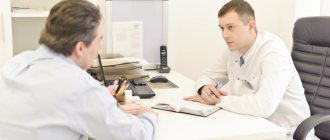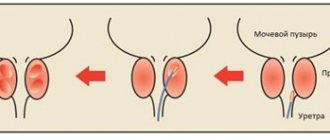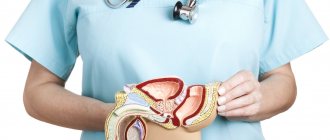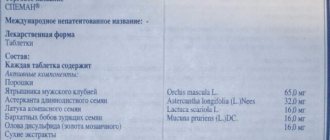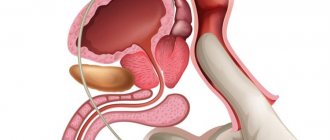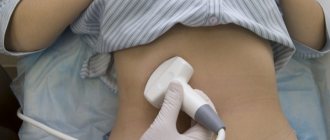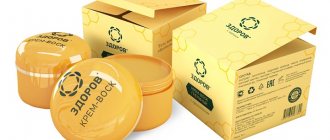- home
- Services
- Transurethral resection of the prostate (TUR)
Transurethral resection of the prostate (TURP) is a type of prostate surgery that removes all or part of the prostate gland, performed to relieve moderate to severe urinary symptoms caused by an enlarged prostate.
The prostate gland, or prostate, is an unpaired male reproductive organ that surrounds the urethra. It secretes a fluid that mixes with sperm, ensuring the vital activity of sperm in the seminal fluid. An enlarged prostate gland compresses the urethra, causing problems with urination. Prostate enlargement is caused by enlargement of the prostate gland (benign prostatic hyperplasia, or BPH) or, in some cases, prostate cancer. There are three main surgical techniques used to remove the prostate gland:
The oldest method is called the "open" or "suprapubic" method. During this operation, an incision is made in the perineum, the area between the base of the scrotum and the anus. This approach has largely been replaced by new minimally invasive surgeries.
Laparoscopic surgery allows the surgeon to remove the prostate gland through much smaller incisions under visual guidance.
Suprapubic and laparoscopic approaches allow removal of lymph nodes, however, they may prevent normal erectile dysfunction after surgery.
Transurethral resection of the prostate gland is by far the most effective surgical procedure that quickly reduces the symptoms of prostate adenoma, and within a few days most men regain normal urination.
To determine treatment, your doctor will consider how severe your symptoms are, what other health problems you have, and the size and shape of your prostate.
TUR is preferable to open surgery when:
— prostate volume less than 60–80 cm3; - relatively young age of the patient who needs to maintain sexual function; - suspected prostate cancer; — obesity, severe concomitant diseases of the cardiovascular, respiratory and endocrine systems; — concomitant diseases of the lower urinary tract; - previous operations on the bladder, prostate, anterior abdominal wall, intestines; - combination of prostate adenoma with chronic prostatitis;
Indications for surgery
TURBT helps reduce symptoms in most men with BPH. This procedure is best suited for men who have a fairly large prostate gland that causes moderate to severe symptoms. TURBT provides long-term results, unlike medications and many other treatments for an enlarged prostate.
Urinary symptoms caused by benign prostatic hyperplasia may include:
- Frequent, urgent urge to urinate - Difficulty starting to urinate - Slow and prolonged urination - Increased frequency of urination at night (nocturia) - Intermittent urination - Feeling of the bladder not being completely emptied - Urinary tract infections.
A TURP of the prostate may also be done to treat or prevent complications due to blocked urine flow due to the following reasons:
— Repeated urinary tract infections — Damage to the kidney or kidneys — Damage to the bladder, which may lead to an inability to control urination (urinary incontinence) — Blood in the urine — Bladder stones.
How to prepare for transurethral resection of the prostate
Before surgery, the patient usually undergoes a full medical examination, including blood tests, ECG, chest x-ray, ultrasound of the genitourinary system, as well as consultations with a therapist and anesthesiologist.
Before surgery:
- 1-1.5 weeks before surgery, you must stop taking medications that can thin the blood, such as Aspirin, Ibuprofen, Naproxen, vitamin E, Clopidogrel (Plavix), Warfarin, and others. — The evening before the operation, you need to shave your pubic area and do a cleansing enema. - Do not eat or drink after midnight the night before surgery. — On the day of surgery, take only medications prescribed by your doctor, washing them down with a small sip of water.
Free consultation with a urologist
TUR of the prostate (transurethral resection of the prostate)
Transurethral resection of the prostate (TURP) is an endoscopic surgery to remove all or part of the prostate gland to treat an enlarged prostate gland.
How is a prostate tour performed?
A TOUR of the prostate is performed under general anesthesia (that is, you will be asleep during the operation) or under spinal anesthesia (that is, you will be conscious, but you will not feel pain). A prostate TOUR usually takes about 1 hour.
The surgeon inserts an instrument called a cystoscope or endoscope through the urethra. The surgeon then inserts a special cutting instrument through the cystoscope. With this instrument, the surgeon removes part of the enlarged prostate gland.
When is a prostate tour performed?
In older men, the prostate gland can often increase in size. This condition is called benign prostatic hyperplasia (BPH or prostate adenoma). An enlarged prostate gland can cause urinary problems. Removing part of the prostate gland very often reduces the severity of these symptoms.
Before surgery, your doctor will try to relieve your symptoms with medications and diet changes. If medications and diet changes do not help, then surgery is prescribed.
TUR of the prostate is one of the most common operations for prostate adenoma.
However, other minimally invasive procedures are also available. Depending on the size of your prostate gland and your health status, your doctor will recommend the type of surgery for you.
Removal of the prostate gland is recommended for:
- difficulty emptying the bladder (urinary retention)
- frequent urinary tract infections
- bleeding from the prostate gland
- bladder stones with an enlarged prostate gland
- very slow urination
- kidney damage
Complications of TURP of the prostate
Complications possible with any other surgery include:
- the formation of blood clots (thrombi) in the veins of the legs, which can travel through the circulatory system to the lungs
- breathing problems
- infections, including surgical wound infection, lung infection (pneumonia), or bladder and kidney infections
- bleeding
- heart attack or stroke during surgery
- reactions to medications
Complications associated directly with TURP of the prostate include:
- problems with urinary control
- infertility
- erectile dysfunction (impotence)
- retrograde ejaculation (return of sperm into the bladder during ejaculation)
- urethral stricture (narrowing of the urethra due to scar tissue)
- TUR syndrome
- Damage to internal organs and structures.
Before TOUR of the prostate
Before the operation, you will be examined several times by your doctor and some tests will be performed. Contact your doctor to ensure that comorbidities such as diabetes, high blood pressure, cardiovascular disease and pulmonary disease are well managed. If you smoke, you should quit smoking a few weeks before the prostate tour.
Always tell your doctor or nurse what medications, vitamins or other dietary supplements you are taking, even those you buy without a prescription.
One week before prostate tour:
You may be asked to stop taking certain medications, such as aspirin, ibuprofen (Advil, Motrin), naproxen, vitamin E, clopidogrel (Plavix), warfarin (Coumadin), and other similar medications. Ask your doctor what medications you should take on the day of surgery.
On the day of surgery:
Do not eat or drink anything from 12 o'clock the night before surgery. Take the medications prescribed by your doctor with a small sip of water.
After TOUR of the prostate
You will be in the hospital for 1 – 3 days.
After a TUR of the prostate, a Foley catheter will be installed to remove urine from the bladder. On the first day after a TUR of the prostate, the urine may contain an admixture of blood. Over time, the urine will clear. For continuous rinsing of the bladder, droppers with special solutions can be connected to the catheter. This helps prevent blood clots from blocking the catheter. Bleeding will gradually decrease and the catheter will be removed after 1 to 3 days.
You will be able to eat as usual immediately after a prostate tour.
You must stay in bed until the next morning. And then you will be asked to move as much as possible.
The nurse will help you change your position in bed and show you exercises to prevent blood clots and pneumonia. You should perform them every 3 – 4 hours. You should wear special elastic stockings and use breathing devices to prevent pneumonia or pulmonary embolism.
You will be given medications to relieve bladder spasms.
Forecast
A TUR of the prostate usually reduces the symptoms of an enlarged prostate gland (prostate adenoma).
Prostate enlargement - what questions you can ask your doctor:
In older men, the prostate gland often increases in size. This condition is called benign prostatic hyperplasia (BPH or prostate adenoma). Prostate adenoma can cause problems with urination.
The following are examples of questions you can ask your doctor or nurse about the prostate gland:
- What is the prostate gland?
- Where is it located?
- What functions does the prostate gland perform?
- What are the causes of enlarged prostate gland? Do other men have prostate problems? How do I know it's not prostate cancer?
- What are the symptoms of prostate adenoma?
- Do the symptoms of prostate adenoma increase in intensity? How fast?
- Are any of these symptoms dangerous?
- What tests need to be performed in order to diagnose prostate adenoma?
- How can I reduce BPH symptoms at home?
- Is it possible to drink drinks containing alcohol or caffeine, coffee?
- How much liquid can you drink during the day?
- Are there medications that can make my symptoms worse?
- What exercises help reduce my symptoms?
- What should I do to avoid waking up frequently at night to urinate?
- Can various herbs and dietary supplements help reduce my symptoms? Do they really help? Are dietary supplements and herbs safe to use?
- What medications are used to treat prostate adenoma? What groups of drugs are used in the treatment of prostate adenoma? What is the difference?
- Can medications completely eliminate the symptoms of prostate adenoma?
- How long does the medicine last?
- What are the side effects of medications that I should pay attention to?
Questions you can ask if you need surgical treatment of prostate adenoma:
- Have I tried all possible conservative treatments and medications that can help treat prostate adenoma?
- How quickly will my symptoms worsen if I don't have surgery?
- What serious complications could happen if I don't have surgery?
- If I refuse surgery now, will a later surgery be less effective or more dangerous?
- What types of operations are used to treat prostate adenoma?
- Which type of operation is preferable in my situation?
- Will a repeat operation be needed? Which type of surgery has a longer lasting effect?
- What are the side effects of each type of BPH surgery? Which type of surgery is more likely to cause erection problems? Urinary incontinence?
- How long will I have to stay in the hospital after surgery? How long is the recovery period after surgery?
- What can I do before surgery to speed up and ease recovery after surgery?
The article is for informational purposes only. For any health problems, do not self-diagnose and consult a doctor!
Author:
V.A. Shaderkina is a urologist, oncologist, scientific editor of Uroweb.ru. Chairman of the Association of Medical Journalists.
‹ Memokath™ prostate Up Kidney transplantation ›
Progress of the procedure
The operation is usually performed under general or spinal anesthesia and lasts about 1-1.5 hours.
The surgeon inserts a fiber-optic resectoscope into the urethra, which is a thin tube approximately 30.5 centimeters long and 1 centimeter in diameter. The resectoscope consists of a light source, valves for fluid to flush the surgical area, and an electrical loop that removes or vaporizes tissue and cauterizes blood vessels. No incision or stitches are required.
After all procedures are completed, a 1-2 day hospital stay is usually required.
After surgery, the patient is usually given a Foley Catheter, which remains in place for 1 to 3 days to allow urination. This device is a tube inserted through the opening of the penis to drain urine. The catheter may cause temporary bladder spasms, which may be painful. The catheter may be removed while the patient is in the hospital or after he goes home.
Recovery after TOUR
The flow of urine increases almost immediately after TUR procedures. After catheter removal, patients often feel some pain or discomfort when urinating. These sensations usually last about a week and then gradually subside. Complete healing takes about 2 months.
Below are some tips to speed up recovery and avoid complications:
- During recovery, avoid driving, operating heavy equipment, lifting, sudden movements, and straining the muscles of the lower part, for example, during bowel movements. - Drinking up to 8 glasses of water per day after surgery is required to promote healing and flush out the bladder. - Consuming foods that help prevent constipation, such as fruits and vegetables, is essential. If constipation occurs, laxatives may be needed. -Strengthening your pelvic floor muscles can help reduce urinary incontinence. It is recommended to perform the exercises for 3:57 sets of 30 contractions daily. — You can resume sexual activity only after your doctor’s permission. - Tell your doctor about all the medications and herbs you are taking to make sure they will not cause bleeding and are safe for you at this time.
How is rehabilitation after TUR of prostate adenoma?
Hospitalization for the operation is required for 3-7 days. In the evening after the intervention you can eat. To speed up the removal of tumor residues, it is recommended to drink more fluids. Treatment after TUR of prostate adenoma may include pain-relieving injections or tablets. They are usually prescribed 1-2 days after removing the catheter, since during this period there may be frequent urination with mild pain.
The postoperative period of TUR of prostate adenoma is a diet. She prohibits salty, smoked, fried and fatty foods. It is equally important to avoid constipation, limit physical activity, give up alcohol and consume more fluids to stimulate the bladder.
What symptoms are normal after TUR?
Up to 4 days of the postoperative period after TUR of prostate adenoma, bleeding may persist. It occurs because the site of coagulation (the bed of the adenoma) is rejected, causing damage to small vessels. To stop bleeding, a catheter is left in the urethra through which fluid is pumped.
Due to weakening of the pelvic floor muscles and a decrease in prostate volume, frequent urgency, urinary incontinence, and a predominance of nighttime diuresis over daytime may persist for several days. Most discomfort is not caused by the removal of prostate tissue, but by an overactive bladder. Therefore, these symptoms usually go away on their own.
How long does rehabilitation last?
Recovery after a TUR of prostate adenoma takes 10-14 days. After this time, you can return to work, but only if it does not involve intense physical activity. In this case, it is recommended to extend the rehabilitation period to 4 weeks.
It is recommended to return to sexual activity no earlier than 4-5 weeks after surgery. It does not affect erectile function, therefore, if the patient did not have sexual problems before TUR, then they will not have them after. Approximately 6 weeks after the procedure, normal urination is restored.
